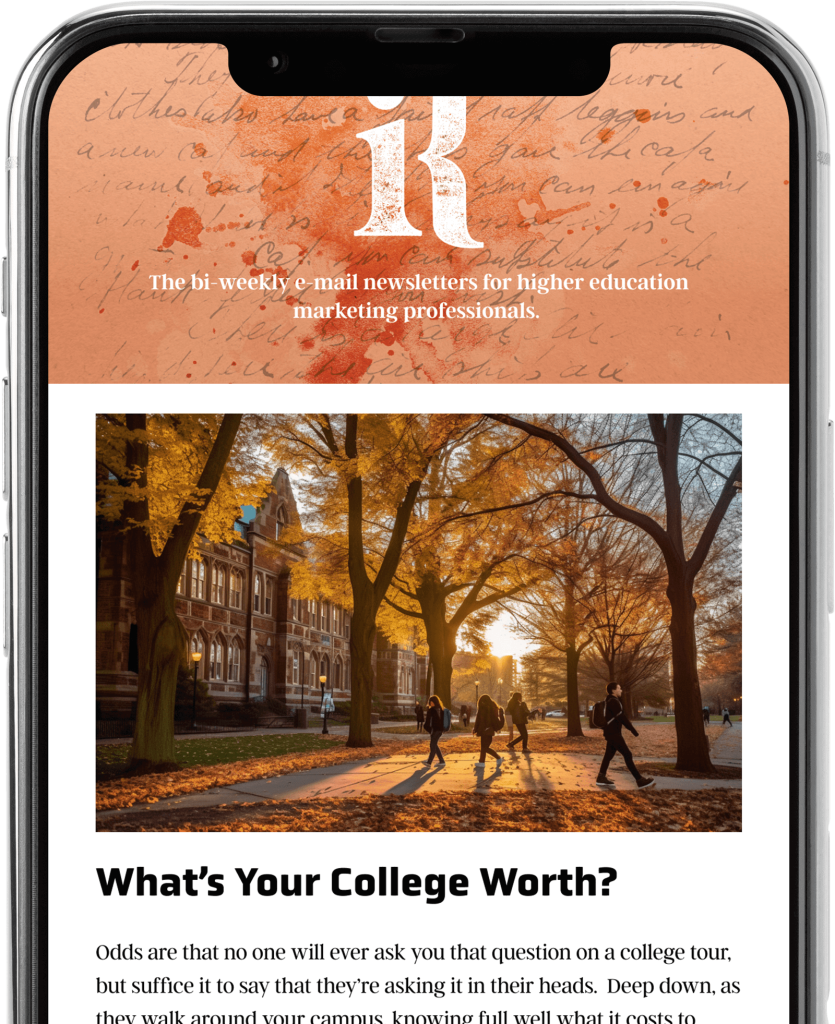Featured
The Small College Advantage

The small college occupies a unique place in society. Usually eclectic and charming with a great deal of history, small schools offer a unique setting and deliver a distinctive experience to those who enroll. One better be prepared to participate in class, and good luck trying to skip a class and get away with it. Your professor will know you by name, and office hours are a real thing.
We typically think of a small school as having fewer than 2,000 students on campus, usually privately funded, and centered around a liberal arts approach to teaching and learning. Like a retail boutique (think a ladies’ dress shop or a fly-fishing store) compares to a big box outlet, small schools are often focused on a particular segment, go deeper in terms of expertise and specialty, and have a more intimate feel. Small colleges are special.
But “small” comes with trade-offs. Like the small shop, small colleges typically offer less, spread out their overhead over fewer people and square feet, and are funded out of a smaller capital base. Factor all of that in and—you guessed it—small colleges are far more expensive for the end user than their larger counterparts. While data on this does vary, some 2024 sources suggest that small schools (approximately $38,000 in annual tuition and fees) are more than three times more expensive than public institutions (around $11,000 per year for in-state students). And since there isn’t a steady stream of state or federal funds flowing in to balance the budget, philanthropy and tuition become particularly critical.
Today’s media narrative challenging the idea of college itself doesn’t help matters. It’s no secret that more and more rising high school seniors (and their parents, of course) are skeptical of the cost of college in general (let alone an expensive school), whether the benefits will truly lead to a substantially larger annual salary, and how much debt will accompany that crisp degree. When you factor in the declining pool of applicants (more seats to fill with fewer prospective students), this isn’t a pretty picture for the small school marketing and enrollment team.
So what’s a small school to do in the face of these challenging circumstances? While there is no one simple answer, here are a few places to start:
Concentrate on your school’s specialty: Figure out how to talk about what your small school is really good at, which happens to be something that larger schools can’t ordinarily compete with. A bridal boutique, after all, won’t compete with Target when it comes to toiletries and housewares but will dominate it when it comes to wedding dresses. What’s your school’s wedding dress?
Focus on your right-fit-student (RFS): The same bridal boutique will rarely appeal to the outdoor enthusiast or pet owner but will have just the right words for the bride-to-be who’s in a time crunch. Who is your right-fit-student?
Synthesize and talk about your value proposition: Your prospective students may be uncomfortable talking about the price of your school, but you can bet they’re thinking about it. Drive up to that discussion with them and figure out how to frame the tuition and fees as an investment—not an expense. The right college experience for the right student is a home run when it comes to the tangible and intangible return. Define that value proposition and put it in front of them.
Leverage Alumni Success Stories: Showcase the success stories of your alumni. Highlighting the accomplishments and career trajectories of your graduates can provide concrete examples of the value your school offers. Personal stories resonate more with prospective students and their families than abstract statistics.
Build Strong Community Connections: Strengthen ties with your local community. Partner with local businesses for internships and job placements. Community engagement can enhance the appeal of your school and provide additional support and opportunities for students.
Use the Three Hurdles Framework: When it comes to testing your content, your positioning, and your messaging, make sure your approach overcomes the three hurdles of higher education marketing: differentiation, relevance, and sustainability.
Take a Self-Assessment: If you haven’t calculated your Collegiate Brand Score, our free online assessment, I’d highly recommend it. It takes about ten minutes and it will provide a high-level analysis of how your branding approach might be improved.
Small schools offer something that larger schools can’t: a specialized experience delivered within a small, intimate context. They should lean into their specialties, develop and refine them, and talk bravely about the difference they make and why the cost of that experience is well worth it. And while these smaller, more expensive experiences aren’t for every student, they’re ideal for the students they’re meant for.
Like what you're reading?
Subscribe to our newsletter to get the latest insights in Higher Education and thought leadership.


